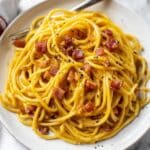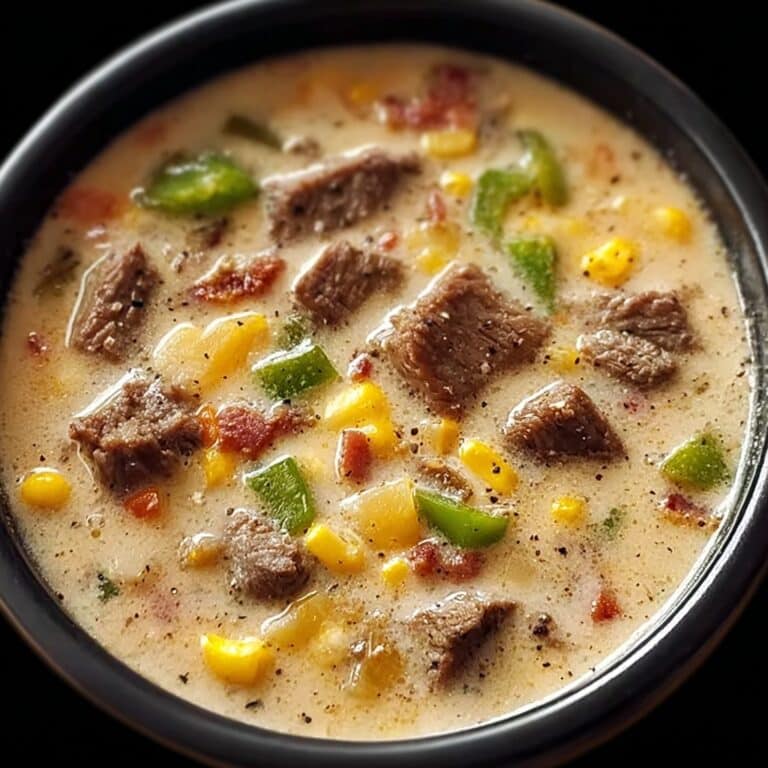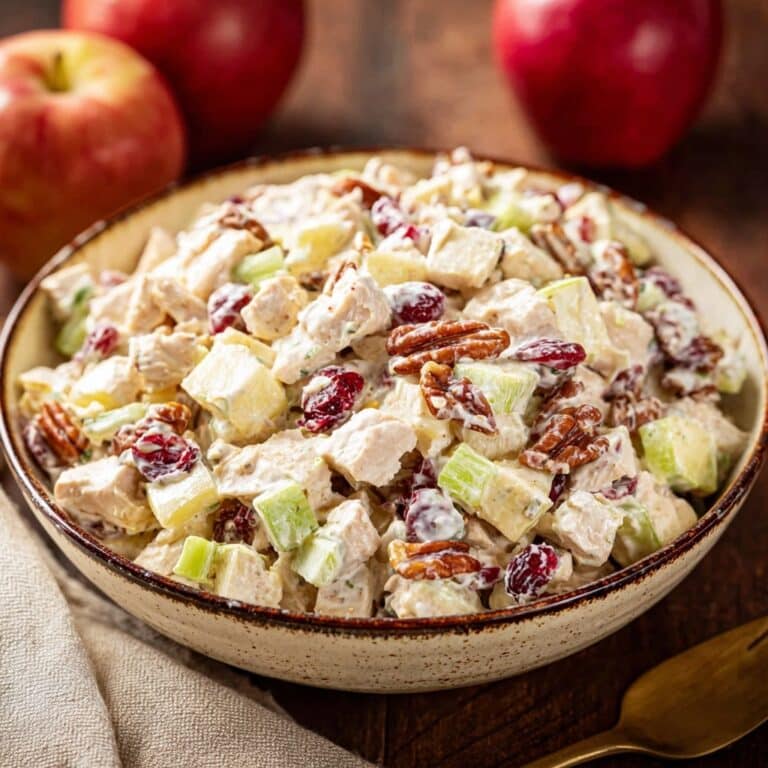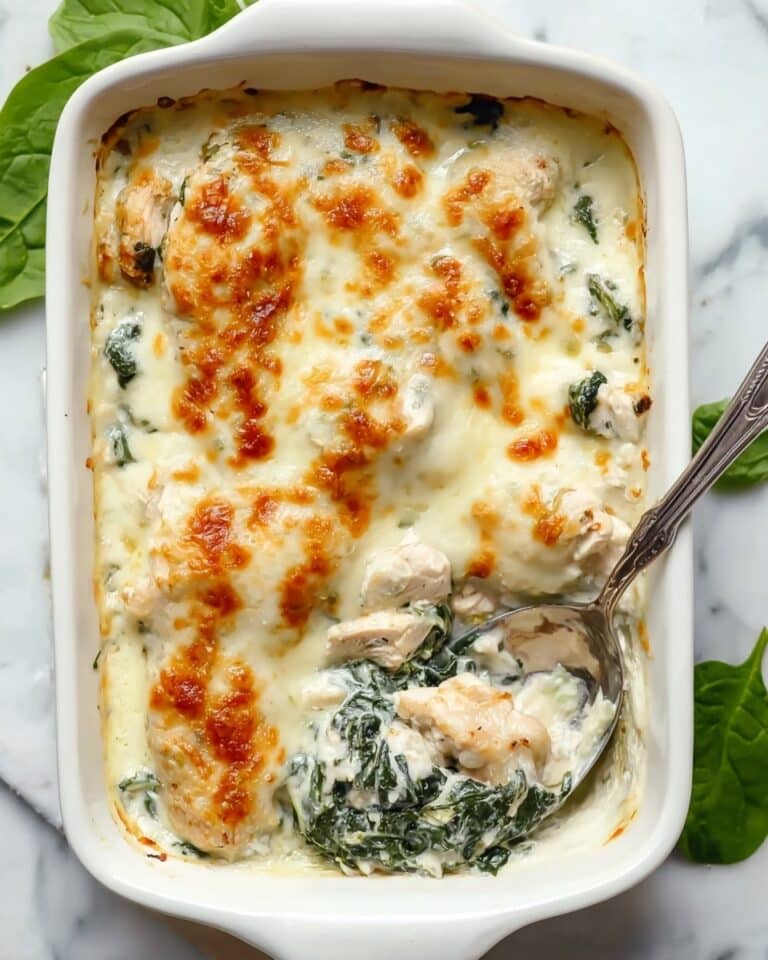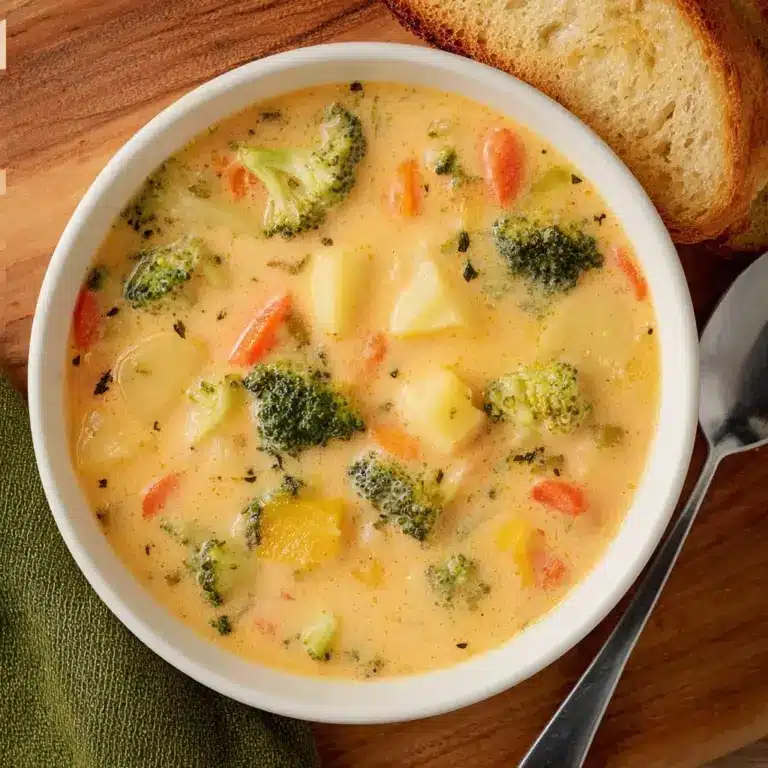Authentic Bucatini Alla Carbonara Recipe
Introduction
Bucatini alla Carbonara is a classic Roman pasta dish featuring a creamy, cheesy sauce made without cream. This authentic recipe highlights guanciale, Pecorino Romano, and egg yolks to create a rich and indulgent meal that’s surprisingly simple to prepare.

Ingredients
- 4-5 ounces guanciale, cut into strips
- 1 whole egg and 3 egg yolks, at room temperature
- 3/4 cup Pecorino Romano, grated
- 1/4 cup Parmigiano Reggiano, grated
- 3/4 pound bucatini
- Freshly cracked black pepper
- Kosher salt
Instructions
- Step 1: Bring a large pot of water to a boil. Once boiling, add kosher salt to season the water.
- Step 2: In a mixing bowl, combine the whole egg, egg yolks, grated Pecorino Romano, Parmigiano Reggiano, and a generous pinch of freshly cracked black pepper. Stir until well blended.
- Step 3: Place the guanciale strips in a large, cold skillet. Turn the heat to medium-low and cook until the fat renders out and the guanciale becomes crispy, about 10-15 minutes. Turn the heat off and wait until the pasta is ready.
- Step 4: Cook the bucatini in the boiling salted water until al dente. Reserve some pasta cooking water before draining the pasta.
- Step 5: Turn the heat back on to medium and add the drained pasta directly to the skillet with the guanciale. Toss to coat the pasta well in the rendered fat. Add a splash of reserved pasta water and continue tossing for 1-2 minutes.
- Step 6: Turn off the heat and wait 30 seconds. Add a couple tablespoons of pasta water to the egg and cheese mixture, stirring to loosen it.
- Step 7: Pour the egg mixture into the pasta pan and immediately begin tossing the pasta to combine. Add small splashes of pasta water as needed to create a glossy, creamy sauce. Keep tossing until the sauce thickens. Taste and adjust with salt and additional pepper if desired.
- Step 8: Serve immediately with extra grated Pecorino Romano or Parmigiano Reggiano on top.
Tips & Variations
- For the most authentic flavor, use guanciale instead of pancetta or bacon as it provides rich, traditional taste.
- If you can’t find bucatini, spaghetti or rigatoni can be good substitutes.
- Be careful not to scramble the eggs by keeping the heat low or turning it off before adding the egg mixture.
- Add extra black pepper for a more pungent kick, which balances the richness of the sauce.
Storage
Carbonara is best enjoyed fresh. If you have leftovers, store them in an airtight container in the refrigerator for up to 1 day. Reheat gently on low heat, adding a splash of water or broth to loosen the sauce and prevent it from drying out.
How to Serve

Serve this delicious recipe with your favorite sides.
FAQs
Can I use bacon instead of guanciale?
Yes, bacon can be used as a substitute, but guanciale has a unique flavor and texture that gives Carbonara its authentic character.
Why is the sauce creamy without cream?
The creaminess comes from the emulsion of eggs, cheese, and pasta water tossed with hot pasta and rendered fat from guanciale. This traditional method creates a silky sauce without any cream added.
PrintAuthentic Bucatini Alla Carbonara Recipe
This Authentic Bucatini Alla Carbonara recipe captures the rich, creamy texture and bold flavors of the traditional Roman pasta dish, combining guanciale, eggs, Pecorino Romano, and Parmigiano Reggiano for a perfectly balanced, comforting meal.
- Prep Time: 10 minutes
- Cook Time: 20 minutes
- Total Time: 30 minutes
- Yield: 4 servings 1x
- Category: Main Course
- Method: Stovetop
- Cuisine: Italian
Ingredients
Meat
- 4–5 Ounces guanciale, cut into strips
Cheeses and Eggs
- 1 Whole egg, at room temperature
- 3 Egg yolks, at room temperature
- 3/4 Cup Pecorino Romano, grated
- 1/4 Cup Parmigiano Reggiano, grated
Pasta and Seasoning
- 3/4 Pound Bucatini
- Freshly cracked black pepper (to taste)
- Kosher salt (for pasta water and to taste)
Instructions
- Boil the pasta water: Bring a large pot of water to a rolling boil, then generously salt the water to season the pasta. This ensures the bucatini cooks with flavor.
- Prepare the egg and cheese mixture: In a mixing bowl, whisk together the whole egg, egg yolks, grated Pecorino Romano, grated Parmigiano Reggiano, and a generous pinch of freshly cracked black pepper until smooth and well combined.
- Cook the guanciale: Place the guanciale strips in a large, cold skillet. Turn the heat to medium-low and cook slowly for 10-15 minutes, allowing the fat to render and the guanciale to become crispy. Once done, turn off the heat and set the skillet aside until the pasta is ready.
- Cook and toss the pasta: Cook the bucatini in the boiling salted water until al dente according to package instructions (approximately 9-10 minutes). Reserve about a cup of pasta water before draining. Immediately transfer the hot pasta to the skillet with the guanciale over medium heat. Toss to coat the bucatini thoroughly in the rendered fat. Add a splash of reserved pasta water and continue tossing for 1-2 minutes until the pasta is glossy and well coated.
- Create the carbonara sauce: Turn off the heat and wait about 30 seconds to slightly cool the pan to avoid scrambling the eggs. Add a couple of tablespoons of reserved pasta water to the egg and cheese mixture to loosen it. Pour this mixture into the skillet with the pasta and quickly toss the bucatini to evenly coat it in the creamy sauce. Gradually add small splashes of pasta water as needed to achieve a silky, glossy texture.
- Finalize seasoning and serve: Taste and adjust seasoning with kosher salt if necessary and add more freshly cracked black pepper to enhance the flavor. Serve immediately, topped with extra grated Pecorino Romano or Parmigiano Reggiano cheese as desired.
- Enjoy your authentic Bucatini Alla Carbonara! Savor this classic Roman dish with its rich, creamy sauce and perfectly crisp guanciale.
Notes
- Use guanciale for the authentic pork flavor; pancetta can be a substitute but changes the flavor profile.
- Make sure eggs are at room temperature to help prevent curdling when mixed with hot pasta.
- Reserve pasta water to adjust sauce consistency and help emulsify the sauce.
- Keep the heat low or off when adding egg mixture to avoid scrambling the eggs.
- Freshly cracked black pepper is key to authentic taste—add generously.
Keywords: Bucatini Alla Carbonara, Traditional Carbonara, Italian Pasta Recipe, Guanciale Pasta, Creamy Carbonara Sauce

